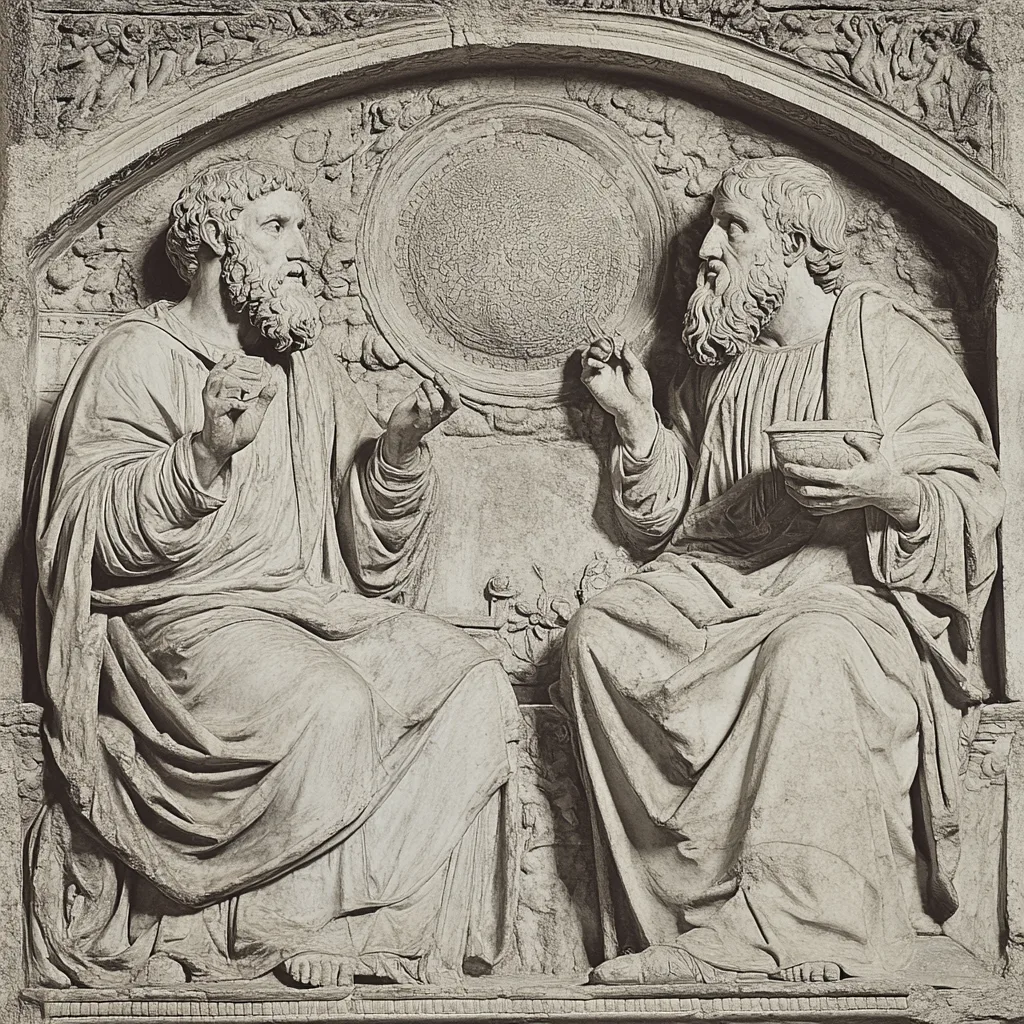This is continued from part 1, part 2, part 3, part 4, and part 5.
Purchase a copy of “On Original Sin, Vol. 1” here! (affiliate link)
The entirety of these posts are concerned with how Vermigli’s views of original sin relate to our contemporary questions about SSA and Christian living. As of yet, I haven’t resolved any issues or proposed anything new. In fact, I don’t intend to do that until the next post! But I hope that as we study each particular piece of the original sin pie (sorry for that illustration), we’ll come away with some inevitable and helpful conclusions.
In the last post, I examined Vermigli’s view of indwelling sin. In short, he believes that indwelling sin is original sin (concupiscence) that has yet to be fully removed. While original sin’s dominion is removed in the Christian, its presence remains (indwells), yet is diminished in the process of sanctification. In this post, I then want to examine the positive nature of how all sin–original and actual–is removed or cleared from the Christian.
Restoration to God in Christ Begins through Regeneration
According to Vermigli, there are three laws that God demands of His creatures. First, God demands that we live in accord with our original nature. Second, God demands that we recover our original righteousness. Third, God demands that we remove all “depraved concupiscence.” Since we are incapable of all three by nature (now), we must repent, or turn from each of these three things. We must repent of original sin, repent and recover our original righteousness, and repent and live in accord with our original nature. But how is such a thing possible? Through regeneration. “We are regenerated only so far as we have been made like Christ. By as much as we are dissimilar to him, by that much we are not reborn, but retain in ourselves the old man” (p. 40). But how can we be regenerated, and so begin this process? According to Vermigli, this begins in baptism.
1. Regeneration Begins through Baptism
Vermigli disagrees with the Westminster Confession over the relation of baptism to original sin and regeneration.
Vermigli states, “Children need the sacrament that leads to regeneration and rebirth” (p. 6). In fact, he reasons from the application of baptism to children that there must be some form of sin within them, warranting baptism, “baptism, which is given to small children, cannot be removing imitative [actual] sin from them; therefore, it is necessary that we posit in them another kind of sin, lest we think they are baptized in vain” (p. 10, emphasis mine). So he then moves on to say that baptism regenerates a person such that the guilt and penalty of original sin is removed. He cites various patristic works to prove his point (p. 43-52). He has a lengthy discussion about what precisely Augustine means or doesn’t mean about original sin after baptism, saying, “Pighius also opposes Augustine for saying that concupiscence is sin before baptism but denying that it is after it…[But] he is mistaken to think no change happens in regeneration…Christ brings a remedy through the application of his righteousness and the removal of guilt. God does not impute the concupiscence (original sin) that remains after regeneration. Second, in the process of regeneration, we receive the gift of the Holy Spirit, who breaks the power of concupiscence (original sin) so that, though it clings in us, it does not rule….Pighius is wrong to think that Augustine consider the concupiscence that remains after baptism not to be sin; he most certainly does…when he denies that it is a sin, we should understand him to mean so far as guilt is concerned since there can be no doubt that it is removed in regeneration. And so it happens that God does not impute it as sin, though it is a sin in and of itself” (p. 28-29). To make a long quote short, Vermigli says that God does not consider us under wrath after baptism because He employs it to regenerate us, and no longer treats us as guilty for original sin itself. *see Footnote

But according to the Westminster Confession of Faith, regeneration is not necessarily tied to baptism. God may employ baptism to regenerate a person, or He may not use it that way, “Although it be a great sin to contemn or neglect this ordinance, yet grace and salvation are not so inseparably annexed unto it, as that no person can be regenerated or saved without it, or that all that are baptized are undoubtedly regenerated” (WCF 28.5). At the same time, God does often use baptism to regenerate a person, though the time when He chooses to regenerate them might not be at the moment that baptism is administered, “The efficacy of baptism is not tied to that moment of time wherein it is administered; yet, notwithstanding, by the right use of this ordinance the grace promised is not only offered, but really exhibited and conferred by the Holy Ghost, to such (whether of age or infants) as that grace belongeth unto, according to the counsel of God’s own will, in his appointed time” (WCF 28.6).
Even though Vermigli has a differing view than the Westminster Confession of Faith, he is not in agreement with the Roman Catholic view of baptism and original sin either. In fact, he is much closer to later Reformers in regards to this area than he is to Roman Catholicism.
Vermigli disagrees with Roman Catholic theology on the nature of original sin and concupiscence
According to Vermigli, concupiscence is original sin itself. Concupiscence is not the fruit of original sin, but that very original sin that we inherit. This is important because in Roman Catholic theology, original sin is not the same thing as concupiscence! According to the Catechism of the Catholic Church, concupiscence is the result of original sin (1, 2, 1, 418). It is the weakness of nature that can be called an inclining towards evil or a movement towards evil (1, 2, 3, 978). Indeed, according to Roman Catholic dogma, concupiscence itself is not considered sin until the will assents to it. Similar to their fallacious distinction between venial and mortal sins, they distinguish between original sin and non-sinful concupiscence. Citing the Council of Trent, the Catechism of the Catholic Church says, “Certain temporal consequences of sin remain in the baptized, such as suffering, illness, death, and such frailties inherent in life as weaknesses of character, and so on, as well as an inclination to sin that Tradition calls concupiscence, or metaphorically, ‘the tinder for sin’ (fomes peccati); since concupiscence ‘is left for us to wrestle with, it cannot harm those who do not consent but manfully resist it by the grace of Jesus Christ‘” (2, 2, 1, 1264). They further argue, “Etymologically, ‘concupiscence’ can refer to any intense form of human desire. Christian theology has given it a particular meaning: the movement of the sensitive appetite contrary to the operation of the human reason. The apostle St. Paul identifies it with the rebellion of the ‘flesh’ against the ‘spirit.’ Concupiscence stems from the disobedience of the first sin. It unsettles man’s moral faculties and, without being in itself an offense, inclines man to commit sins” (3, 5, 5, 2515). This is squarely in opposition to Vermigli’s view of original sin’s (concupiscence’s) sinfulness. He points out that if something is opposed to God, that is in fact the definition of sin.
As we move on later to consider actual sin, this difference of opinion is important to keep in mind. According to Vermigli, original sin is concupiscence. But according to Roman Catholic theology, original sin creates concupiscence, but concupiscence is not sin in itself.
Vermigli also disagrees with Roman Catholic theology on the relation of baptism and original sin
According to Vermigli, baptism undoes the penalty and guilt of original sin (which is concupiscence). In his view, original sin/concupiscence is not removed in baptism, but the guilt of original sin is. This differs, once again, from Roman Catholic dogma. According to the Catechism of the Catholic Church, baptism actually removes original sin itself. At the same time, baptism does nothing to the concupiscence that original sin has created. They say, “Yet the grace of Baptism delivers no one from all the weakness of nature. On the contrary, we must still combat the movements of concupiscence that never cease leading us into evil” (1, 2, 3, 10, 978). And they further argue, “Although it is proper to each individual, original sin does not have the character of a personal fault in any of Adam’s descendants. It is a deprivation of original holiness and justice, but human nature has not been totally corrupted: it is wounded in the natural powers proper to it, subject to ignorance, suffering and the dominion of death, and inclined to sin – an inclination to evil that is called concupiscence. Baptism, by imparting the life of Christ’s grace, erases original sin and turns a man back towards God, but the consequences for nature, weakened and inclined to evil, persist in man and summon him to spiritual battle” (1, 2, 1, 405).
What of Vermigli and the Lutherans?
Augsburg Confession:
Article 2: 1 Also they teach that since the fall of Adam all men begotten in the natural way are born with sin, that is, without the fear of God, without trust in God, and with 2 concupiscence; and that this disease, or vice of origin, is truly sin, even now condemning and bringing eternal death upon those not born again through Baptism and the Holy Ghost. 3 They condemn the Pelagians and others who deny that original depravity is sin, and who, to obscure the glory of Christ’s merit and benefits, argue that man can be justified before God by his own strength and reason.”
Formula of Concord: Article 1, very much in depth
https://bookofconcord.org/formula-of-concord-solid-declaration/article-i/
We see then several different views on regeneration, original sin, and concupiscence:
| Vermigli | Lutheran | Roman Catholic | Westminster Confession | |
| Original Sin | A deprivation of Adam’s original righteousness, knowledge, and holiness, as well as a corruption of Adam’s nature, such that it is sinfully disposed to sin. | Same as Vermigli. | A deprivation of Adam’s original righteousness and justice. | Same as Vermigli. |
| Concupiscence | Same as original sin. | Same as original sin. | A movement of the sensitive appetite against reason, or a disposition to sin, that is inherited as a consequence of original sin. | Same as original sin. |
| Baptism | Regenerates. | Mentioned as the work of the Holy Spirit here, considered necessary here, but does not work in itself. | Regenerates. | May be employed by God to regenerate a person, but not necessarily. |
| Regeneration | In regeneration, God does not impute the guilt and penalty of original sin (concupiscence). But its presence remains. | In regeneration, God grants faith to us to continue our regeneration, justifies us, and progressively sanctifies us. | In regeneration, God removes the reality of original sin, but not of concupiscence. | In regeneration, God both endows a new nature, and grants repentance and faith in Christ, and so He does not impute either original or actual sin. |
2. Regeneration Continues Through Repentance
Indeed, unlike Roman Catholic dogma, according to Vermigli, baptism does not entirely remove the existence of original sin. “The material of [original] sin remains” says Vermigli. It is this material that gives rise to actual sin–something for which Christians are also liable before God. Not only is original sin all-pervasive in the human person, but it also produces fruit of actual sin. Vermigli argues,
“Indeed, sin understood in this broad sense not only encompasses original sin, that is, our depraved nature and the corrupted powers of our body and mind, but also all those evils following upon this. These include forbidden inclinations of the mind, sinful deliberations, evil pursuits, and corrupt habits.”
-Vermigli (p. 83)
This quote is important to analyze for several reasons. In that quote, Vermigli explains that actual sin derives from original sin, is distinguished from from original sin, and is defined differently than original sin. First of all, in this quote we see that
Actual Sin is the Fruit of Original Sin
Vermigli says, “Sin…encompasses…all those evils following upon this [original sin].” There are sins that original sin gives rise to that are distinct from original sin itself. In fact, these sins “follow” from original sin. They are like a child (actual sin) that has been birthed from a mother (original sin). The latter is necessary to produce the former, but the former is a distinct entity from the latter. As the PCA study committee has pointed out, the term “actual” does not mean that some sins are real while original sin is not real. Instead, actual means “the act” or the purposeful, volitional (ie willful) act of sin. Original sin includes those things that are prior to the assent of the volition, while actual sin includes those things that include the assent of the volition.
Actual Sin and Original Sin are Distinct
This is the most important thing to focus on here. We will consider in our next post as well. In this quote, Vermigli says that original sin is, “the corrupted powers of body and mind“.
Meanwhile, he argues that actual sin is, “the forbidden inclinations of the mind as well as corrupt habits“. Notice that he carefully says that “forbidden inclinations” are actual sin, which follow from the corruption of original sin.
He says that both actual sin (mental impulses) and original sin (corrupt nature) are sin: “those initial mental impulses and our corrupt nature are sins” because our guiding principle is to be conformed to God, so, “when we are inclined to those things that God’s law forbids…it is indisputable that we must be said to sin” (p. 85). This is an important distinction to catch, because it is highly relevant to our contemporary discussion, which we will look through below, about how desire and attraction are related to original sin.
Actual and Original Sin are Defined Differently
According to Vermigli, we may have our original sin‘s guilt washed away in baptism, but our actual sin‘s guilt is different. It must be removed as regeneration continues to work itself out in the Christian. Since an act of sin is momentary–done and then gone after it is performed–it is unlike original sin. Actual sin is a temporary act of rebellion that makes us liable to a penalty. Actual sin’s guilt and power then must be removed by another means: faith and repentance (p. 89). While our original sin is not imputed through baptism/regeneration, our actual sin’s guilt is only not imputed when we receive the imputed righteousness of Christ, and forgiveness, by faith.
| Vermigli | Roman Catholic | Westminster Confession | |
| Actual Sin | “Forbidden inclinations of the mind and corrupt habits” (ie consent of mind or will). | Consent of the volition (will) to do what is sinful. | Same as Vermigli |
| Imputation of Actual Sin | Personal repentance and faith in Christ required to receive imputed righteousness of Christ, and thus undo penalty of actual sin. | Sacrament of penance required to undo penalty of actual sin. | Regeneration, which includes personal repentance and faith in Christ, required to receive imputed righteousness of Christ, and thus undo penalty of original and actual sin. |
The Christian life is one of repentance. Repentance includes: open confession of our sin to God, remorse for it, hatred of it, rejection and avowed denial of it, mortification of it, and vivification of righteousness. The scope of repentance is from both our acts of sin, as well as from the indwelling (original) sin that remains.
But our repentance is never perfect or complete in this life. This brings up the question that we will address in our next post: is SSA actual or original sin or neither or both? Is SSA something that must and can be repented of? And, to what extent must a Christian repent of SSA in order to be a minister of the gospel?
This is continued in part 7.
Footnote:
For more on Vermigli’s view of original sin and baptism, see pgs. 61-64, 75-76, 90 of his work.
Again, this view of baptism and regeneration is not the view of the Confessional standards to which I subscribe, nor is it my own personal view. I believe God may employ baptism to regenerate, but that it is not contained in the thing itself. Nor does God employ regeneration every time someone is baptized. Nor is regeneration (when God ties it to baptism) necessarily tied to the moment of its application.




Leave a Reply